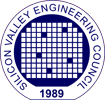Interstellar Travel – Nuclear Propulsion and Other Fun Topics
The fact that we measure interstellar distances in light-years (the distance that light can travel in a year, going 186,000 miles per second) demonstrates the vastness of the medium. Using NASA’s fastest rockets, it would take more than 10,000 years to travel to our closest star system, only 4 light years away (Alpha Centauri). In this talk, we will examine the feasibility of human travel to our nearest stellar neighbors, what technologies we need to get us there, and some unexpected consequences to exploring the galaxy at extremely fast speeds.
Ryan Weed is a physicist and USAF Experimental Test Pilot, logging over 2000 hours in more than 30 different aircraft. Ryan is a NASA Innovative Advanced Concepts (NIAC) Fellow, studying radioisotope positron and fission fragment propulsion systems. He has worked at Blue Origin, where he designed and implemented an instrumentation laboratory for cryogenic rocket fuels, and founded Positron Dynamics, where he designed and built a positron beamline facility, and developed high specific impulse propulsion concepts. Ryan earned a B.A in Physics from Wesleyan University, B.S. in Applied Physics from Columbia University, M.Sc. in Flight Test Engineering from Air University, and PhD in Physics from Australian National University. In his current role at DIU, Ryan manages the Nuclear Propulsion and Power program within the Space Portfolio.
Note: For this event, attendance is free (registration is still required). Refreshments (pizza, sandwiches, drinks) are optional and will be served at the presentation to paid attendees only.
Share this:Click to share on Facebook (Opens in new window)Click to share on LinkedIn (Opens in new window)Click to share on Telegram (Opens in new window)Click to share on Pinterest (Opens in new window)Click to share on Twitter (Opens in new window)Click to share on WhatsApp (Opens in new window)Click to email a link to a friend (Opens in new window)Click to print (Opens in new window)


